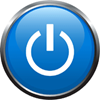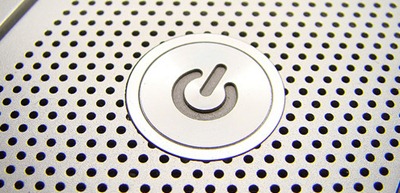 Ever noticed the little symbols that appear on the power button of your device and equipment? Most people don’t. If it is a toggle switch like the light switch installed on your home and office, you just know which way is ON and OFF since you use them everyday. If you live in North America, the switch is ON when it is “up” and OFF when “down”. This is reverse in many countries such as the UK, Ireland, India, Australia, and in New Zealand.
Ever noticed the little symbols that appear on the power button of your device and equipment? Most people don’t. If it is a toggle switch like the light switch installed on your home and office, you just know which way is ON and OFF since you use them everyday. If you live in North America, the switch is ON when it is “up” and OFF when “down”. This is reverse in many countries such as the UK, Ireland, India, Australia, and in New Zealand.
Whether you need it or not, all power switches be it is a toggle switch or a push button, have a symbol on it that visually defines how the switch is supposed to work. The International Electrotechnical Commission requires power buttons to carry graphical symbols that indicates how the control activates or deactivates a particular device. The IEC has defined the following symbols in a standard published in 1973.
![]() IEC 5007, the power on (line) symbol, appearing on a button or one end of a toggle switch indicates that the control places the equipment into a fully powered state. It comes from the binary system (1 or | means on).
IEC 5007, the power on (line) symbol, appearing on a button or one end of a toggle switch indicates that the control places the equipment into a fully powered state. It comes from the binary system (1 or | means on).

The line symbol is usually found in toggle switches connected to the main lines – the typical light bulb switch.
![]() IEC 5008, the power off (circle) symbol on a button or toggle, indicates that using the control will disconnect power to the device. It comes from the binary system (0 means off).
IEC 5008, the power off (circle) symbol on a button or toggle, indicates that using the control will disconnect power to the device. It comes from the binary system (0 means off).
The circle symbol is also found on toggle switches connected to the main lines, usually on the other end of the switch. Typically, the line and circle symbols occur on the same switch. These are known as rocker switches.
![]() IEC 5010, the power on-off symbol (line within a circle), is used on buttons that switch a device between on and fully off states.
IEC 5010, the power on-off symbol (line within a circle), is used on buttons that switch a device between on and fully off states.

This symbol is found on switches that connects to or disconnects from the mains, with the “OFF” as the stable position, whilst the “ON” position only remains during the time the button is depressed.
![]() IEC 5009, the power symbol (line partially within a broken circle), is used on buttons that does not fully disconnect the device from its power supply.
IEC 5009, the power symbol (line partially within a broken circle), is used on buttons that does not fully disconnect the device from its power supply.

This symbol is found on devices that receives power from the mains (or battery) through the power outlet on walls or similar arrangement, such as the computer, monitor, printer or television. A power switch with this symbol does not fully turn off the device as long as it continues to receive power from the source.
![]() A crescent moon is used as indicator for sleep state or low power-state. It was added by IEEE 1621 as a replacement for the standby symbol.
A crescent moon is used as indicator for sleep state or low power-state. It was added by IEEE 1621 as a replacement for the standby symbol.
Most people are familiar with the power symbol as it is the most widely used one. The crescent button is not seen in many devices. In most cases only the power symbol is used as both the power and the crescent moon symbol basically indicates the same thing.
Sources: Wikipedia, California Energy Commission, Unplugged

Nice article, thanks.
ReplyDeletethanks for your information
ReplyDeleteThe information regarding the symbol from IEC 5010 ON/OFF (line within a circle) better describes the meaning of IEC (60417) 5011 (momentary push switch). This type of switch is typically used for a device that is only ON when you are pushing the button, like an electric drill.
ReplyDeleteIEC 5010 is the symbol for a (push-push) switch that connects and disconnects to the mains where both ON and OFF positions are stable, like the power button on a radio.